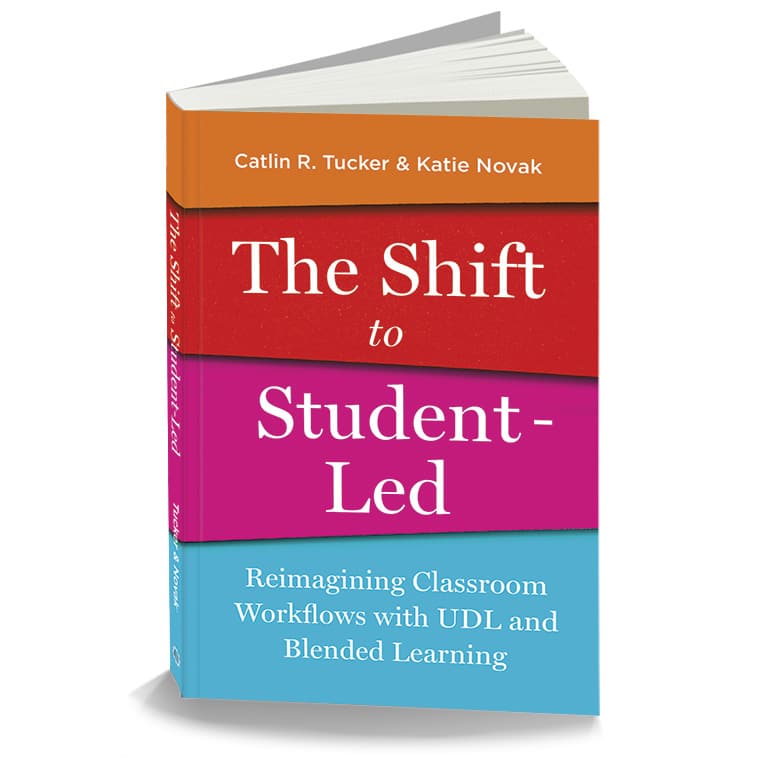What is problematic about teachers being the only audience for student work?
When teachers are the only audience for student work, it creates an unsustainable workload because teachers are responsible for reviewing, evaluating, and providing feedback on all of their students’ work. This workload is overwhelming, especially when teachers have large class sizes or students produce a lot of work. It can also be challenging for teachers to provide timely feedback and support to all students, which can harm students’ motivation if they feel that their work is not being seen or appreciated.
Students may not feel a strong sense of accountability for their work if they know the only person who will see it is their teacher. When the teacher is the only audience for work, students often want the work to be “good enough.” This can may result in students putting less time, energy, and effort into assignments.
By contrast, when students have an authentic audience beyond their teacher, the workload for the teacher is reduced. This is because the responsibility for providing feedback and evaluation can be shared among the audience. Additionally, when students know that their work will be seen by people beyond their teacher, they are more motivated to put effort into their work and take pride in what they create, which can reduce the need for the teacher to spend time motivating and engaging their students. Instead of simply completing work for a letter grade, students are more likely to appreciate the value of the work they are doing if it has an authentic audience.
Benefits of Connecting Students with an Authentic Audience
Beyond shifting from a time-consuming teacher-led workflow to a more sustainable student-led workflow, connecting students to an authentic audience has the following benefits.
Increases motivation and engagement
When students know that their work will be seen by people beyond their teacher, they are more motivated to put effort into their work and take pride in what they create.
Cultivates real-world skills
Working on projects for an authentic audience helps students develop essential skills they will need in their future careers, such as communication, collaboration, and problem-solving.
Provides authentic feedback and evaluation
When students receive feedback from a real audience, they can gain a better understanding of how their work is perceived by others. This can help them improve their work and develop a stronger sense of self-efficacy.
Creates opportunities for connection and community building
Creating work for an authentic audience can help students feel connected to the wider world and contribute to a sense of community. It can also provide opportunities for students to connect with people from different backgrounds and perspectives.
Ultimately, connecting students with an authentic audience can be a powerful way to enhance their learning and growth, and increase their motivation to do their best work while providing opportunities for meaningful engagement with the world around them.
When we are underwhelmed by student work and assessments, it is an opportunity to shift the purpose of the assessment from earning a grade to creating something inspiring, meaningful, and public.
Tucker & Novak, The Shift to Student-led
In our book, The Shift to Student-led, Dr. Katie Novak and I encourage teachers to shift from assigning work where the only audience is the teacher to connecting students with an authentic audience for their work. We encourage teachers to use Universal Design and blended learning to create the time and space needed to shift the responsibility for identifying the intended audience for their work to students. Once they’ve identified and understand their audience, let’s position students to communicate with and engage their audience in the process of providing feedback as they work. When we use student-centered strategies to encourage learners to produce work for an authentic audience, we empower them to take the lead in their education and build meaningful interactions with individuals and experts beyond the classroom.
This approach can lighten the load for teachers and help students develop real-world skills, increase motivation and engagement, and provide opportunities for feedback and evaluation from a wider range of sources. By prioritizing an authentic audience for student work, we can create a more dynamic and meaningful learning experience that prepares students for success in their future careers and in life.
To learn more about this shift, check out our new book, The Shift to Student-led. If you are interested in a discounted bulk order of 10 or more books, complete this form.





No responses yet